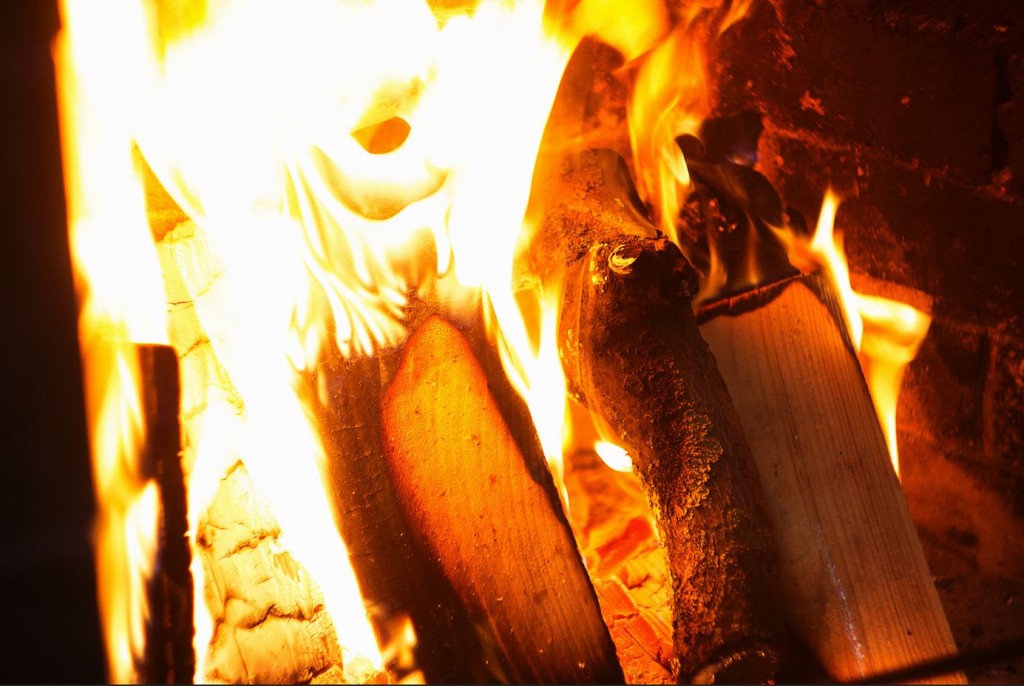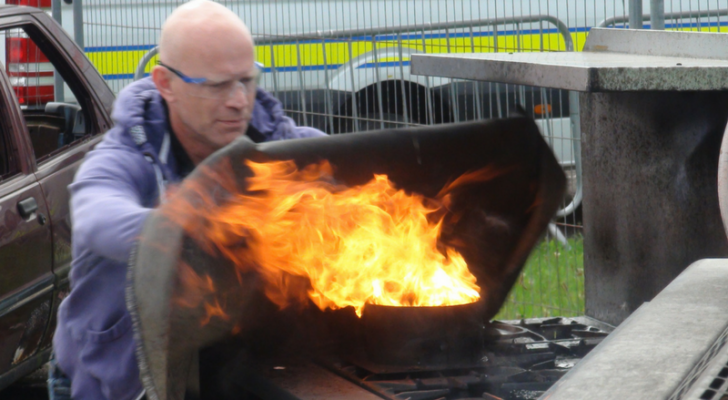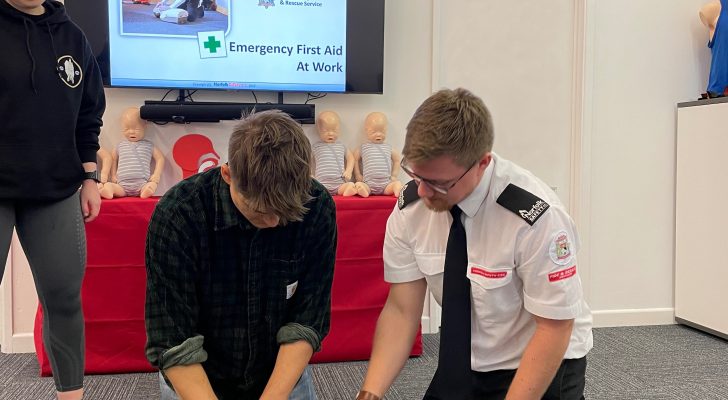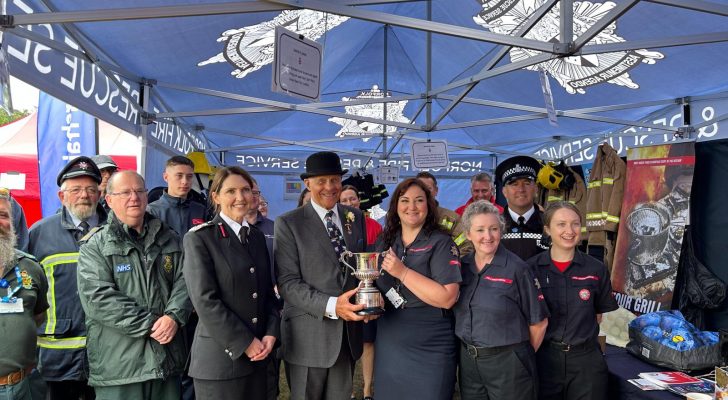Carbon Monoxide Poisoning and Chimney Fire Safety Advice
As Winter approaches and the temperature falls, the use of open home fires and heating devices will increase. Following this Fire Safety Guidance will help reduce the risks involved with this:
With the use of heating appliances fueled by coal, smokeless fuels, wood, oil and gas there are many associated risks that we must be aware of such as Fires and Carbon Monoxide Poisoning. The below guidance from Norfolk Fire & Rescue Service will help prevent these and keep you safe this Winter.
Carbon Monoxide (CO) Poisoning:
Heating and cooking appliances fueled by coal, smokeless fuels, wood, oil and gas can cause CO poisoning if they are poorly installed, incorrectly used or if they are not properly and regularly maintained..
When fuel does not burn properly, it produces poisonous, and potentially deadly, CO gas. It can also damage your health permanently. The early symptoms of CO poisoning are: tiredness, drowsiness, dizziness, chest pains and nausea.
Householders can reduce the risk of CO poisoning by:
- Having appliances installed and properly checked by competent engineers
- Getting chimneys and flues inspected and swept
- Not overloading a fire and only burning the fuel it is designed for
- Fitting a carbon monoxide detector
The Health and Safety Executive has policy responsibility for carbon monoxide issues.
So What Causes Chimney Fires?
Chimney fires occur when the deposits of combustion are left within the flueways. By definition, a chimney fire is the burning of soot or creosote within the appliance, outlet or flue system, which can result in improper function of the appliance, damage to the flue, house or surrounding structures and it can even start a house fire.
Chimney fires are usually started when high temperatures or flames from a very hot fire extend into the appliance outlet or flue and the combustible deposits catch light.
This type of chimney fire can be sometimes associated with:
- A loud roaring noise, which occurs as massive amounts of air are sucked through the appliance or fireplace opening and used to oxidize the combustible fuels within the system
- Sparks and flames seen shooting from the chimney top, which can be firework like in appearance
- A glowing or shimmering appliance outlet or connector
- Vibrating appliance, outlet or connector
- Flames visible through any tiny cracks in the outlet or connector
- Smoke and odours noticeable in adjoining rooms or the loft space
- The heating up of the chimney breast or flue pipe, in the same room as the appliance and also other rooms that the flue passes through
Important! It should be noted that it is possible to experience a chimney fire without noticing any of the above characteristics; it is also possible that any combination of the above characteristics, will be noticed. As all chimney fires are different, the above characteristics are intended only as a useful guide.
All chimney fires are extremely dangerous even though their intensity and duration may vary. During a chimney fire, internal flue temperatures may reach a staggering 1,100 degrees Celsius. As a result, massive radiant heat is emitted through the chimney walls, and with the addition of possible thatched or wooden roofs, a devastating house fire can start quickly. Flames and sparks can leap from the chimney top or through cracks in the flue and ignite the roof and other parts of the house. The bricks of a chimney can become hot enough to combust nearby flammable materials such as thatch and wooden beams. Adjoining houses and nearby trees can also be affected.
If no apparent damage is visible on the exterior of the chimney breast or flue, it is still highly probable that damage may have occurred within the lining of the chimney. Chimney fires burn hot enough to damage liners, crack chimney walls and pots, and damage factory-built metal chimneys.
To ensure your safe this winter please follow this guidance to reduce the likelihood of your chimney catching fire:
- Ensure your chimney is swept regularly
- Keep chimneys and flues clean and well maintained
- Be careful when using open fires to keep warm. Make sure you always use a fire guard to protect against flying sparks from hot embers
- Ensure the fire is extinguished before going to bed or leaving the house
- Ensure good quality fuel is used
- Chimneys should be swept according to the type of fuel used:
o Smokeless fuels – at least once a year
o Bitumous coal – at least twice a year
o Wood – quarterly when in use
o Oil – once a year
o Gas – once a year (Any work on gas appliances requires a Gas Safe registered installer/engineer)
- Never interrupt the air supply by blocking air vents or air bricks
After a Chimney Fire:
After a chimney fire has occurred and been extinguished, the chimney must be inspected as soon as possible. A certified sweep should perform a thorough inspection before the chimney is used again to ascertain if the rapid and dramatic changes of temperature, which would have occurred within the chimney, have caused any damage and also to determine the need for any remedial measures. It is imperative that the chimney is not used prior to inspection.
If any damage is present and there is another chimney fire then it is quite likely the fire will spread to other parts of the building. If cracks are present within the flue then poisonous fumes can either filter through these cracks or damage. This may effect and dilute an effective warm air up draught and cause the fire to smoke. After a chimney fire, it is extremely important to sweep the burned “expanded” creosote residue from the flue, as this will cause obstructions and blockages within the flue. It is likely that, after a chimney fire, some damage will have occurred and remedial work will be necessary.
It is essential that a smoke test is carried out in accordance with the current Document J Standards.
For further links, full guidance and information please visit the Norfolk and Rescue Service Web page:
If you are concerned about any other Fire Risks both in your workplace and home please view our Fire Risk Assessment Course which is suitable for individuals or groups on our customers premises or our Norfolk Fire & Rescue Service, Bowthorpe Training and Development Centre, Barnard Road, Norwich, Norfolk (NR5 9JB).
To discuss your training needs please don’t hesitate to contact us
Featured courses
Duration: Half day (3.5 hours)
Location: On/Off Site
Fire Marshal Course (Inclusive of Fire Extinguisher Practical)
Our Fire Marshal safety training is our most popular course. Suitable as a refresher course for those who have previously had training, or for new Fire Marshals. The Fire Marshal…
Duration: Full day (6.5-7 hours)
Location: On/Off Site
Emergency First Aid at Work
The Emergency First Aid at Work Course is aimed at anyone looking to gain a basic level of First Aid training. The course meets the training legislative requirements of the…
Featured product
What a fantastic couple of days we’ve had at The Royal Norfolk Show! Thank you to everyone who has stopped by the Emergency Services Village and picked up some fire…
Discover more »
 Norfolk Fire
Norfolk Fire


